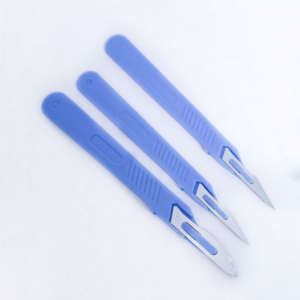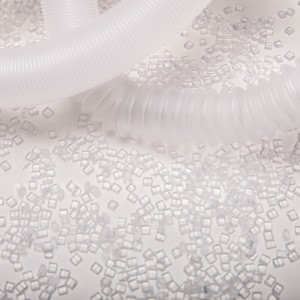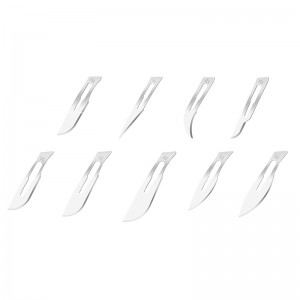High-Quality Surgical Scalpel for Precision Surgery
Validity period: 5 years
Production date: See product label
Storage: Surgical scalpel should be stored in a room with no more than 80% relative humidity, no corrosive gases and good ventilation.
The Surgical scalpel is composed of a blade and a handle. The blade is made of carbon steel T10A material or stainless steel 6Cr13 material, and the handle is made of ABS plastic. It needs to be sterile before use. Not to be used under an endoscope.
Scope of use: For cutting tissue or cutting instruments during surgery.
A surgical scalpel, also known as a surgical knife or simply a scalpel, is a precision cutting instrument used in medical procedures, particularly during surgeries. It is a handheld tool with a handle and a detachable, extremely sharp blade.The handle of a surgical scalpel is typically made of a lightweight material, such as stainless steel or plastic, and is designed to provide a comfortable grip and optimal control to the surgeon. The blade, on the other hand, is usually made of high-quality stainless steel and comes in various shapes and sizes, each suitable for specific surgical tasks.Surgical scalpel blades are disposable and come individually wrapped in sterile packaging to minimize the risk of infections or cross-contamination between patients. They can be easily attached or detached from the handle, allowing for quick blade changes during procedures.The extreme sharpness of the scalpel blade helps surgeons make precise incisions, dissections, and excisions during surgeries. The thin and highly precise cutting edge allows for minimal tissue damage, reducing patient trauma and facilitating faster healing.It is important to note that surgical scalpel blades should be handled with extreme caution and disposed of safely after use to prevent accidental injuries and to maintain the required hygiene standards in medical environments.








